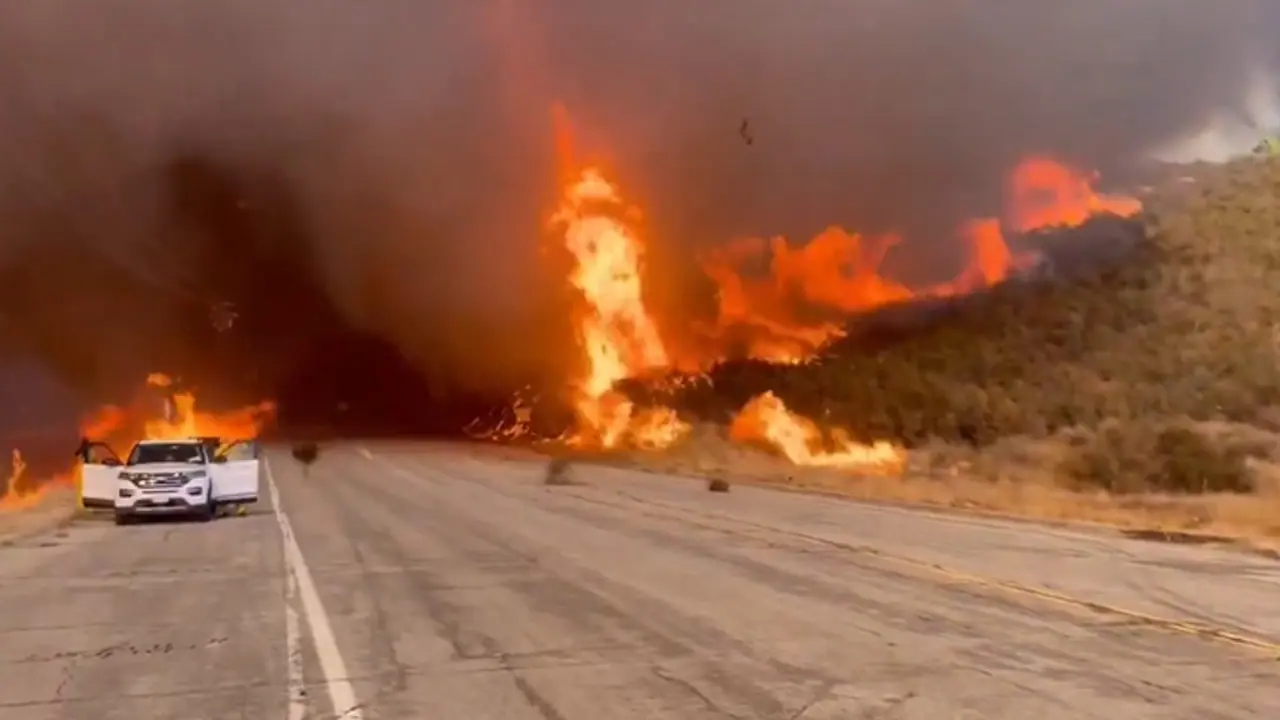A fast-moving wildfire, the Hughes Fire, erupted near Castaic Lake, north of Los Angeles, forcing over 50,000 residents to evacuate. Fueled by dry vegetation and strong winds, the fire rapidly consumed 5,000 acres, disrupted traffic, and prompted urgent firefighting efforts and safety concerns.
A new wildfire erupted north of Los Angeles on Wednesday, forcing tens of thousands to flee their homes. Known as the Hughes Fire, the blaze spread rapidly across dry terrain, fueled by strong winds and low humidity. Authorities have issued evacuation orders and warnings for over 50,000 residents in an area still recovering from devastating fires earlier this season.

The wildfire broke out near Castaic Lake, located about 35 miles (56 kilometres) north of Los Angeles, near Santa Clarita. The flames quickly consumed hillsides, spreading over 5,000 acres (2,000 hectares) within hours. Intense Santa Ana winds propelled the fire, pushing smoke and embers ahead of the flames.
Around 31,000 residents living near Castaic Lake were ordered to evacuate as fire crews battled to control the rapidly spreading blaze. “I’m just praying that our house doesn’t burn down,” one resident told KTLA while loading belongings into their car.
Robert Jensen of the Los Angeles County Sheriff’s Department urged residents in the affected areas to leave immediately. “We’ve seen the devastation caused by people failing to follow evacuation orders in past fires like the Palisades and Eaton fires,” Jensen stated. “I don’t want to see that here in our community. If you’ve been issued an evacuation order, please get out.”
Law enforcement officers patrolled neighbourhoods to ensure compliance with evacuation orders. In addition, Sheriff Robert Luna confirmed the evacuation of Pitchess Detention Center in Castaic, where 500 inmates were relocated to safer facilities. Other local jails, housing approximately 4,600 inmates, were on standby for evacuation if conditions worsened.
The wildfire disrupted traffic on Interstate 5, a major transportation route along the West Coast, forcing the closure of a section of the freeway. Aerial firefighting teams, including helicopters, planes, and two Super Scoopers, joined the battle against the blaze. Ground crews from the Los Angeles County Fire Department and Angeles National Forest also worked tirelessly to contain the fire.
Melissa Camacho, an attorney for the ACLU, voiced concerns about the safety of incarcerated individuals in fire-prone areas. “The expansion of the jail system in dangerous fire zones raises serious concerns for the safety of people in custody,” Camacho said.
California Governor Gavin Newsom announced that state resources were being deployed to support federal firefighting efforts. This response comes amid ongoing criticism from former President Donald Trump over the state’s wildfire management practices.
The cause of the Hughes Fire remains unknown, but it ignited under red flag conditions—marked by strong winds and low humidity, ideal for wildfire spread. Despite being in the rainy season, Southern California has experienced nearly eight months without significant rainfall, leaving vegetation dangerously dry.
Experts warn that climate change, driven by human activity and fossil fuel use, intensifies weather patterns and contributes to prolonged droughts.
